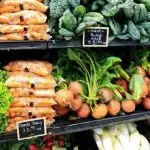(NEW YORK) — Consumer prices rose 3% in September compared to a year ago, extending a monthslong uptick that has sent inflation to its highest level since January, government data on Friday showed. The reading came in lower than economists’ expectations.
The fresh data marked a slight increase from a 2.9% year-over-year increase recorded a month prior. An acceleration of price increases over recent months has coincided with a flurry of tariffs issued by President Donald Trump.
Beef prices soared nearly 15% over the year ending in September, data showed. Trump has set off outcry among some ranchers over a plan to import beef from Argentina in an effort to reduce U.S. prices.
Egg prices, a longtime symbol of rising costs, fell almost 5% in September. The price of eggs stands about 1% lower than where it was a year ago. The price of coffee has surged 19% over the past year, the data showed.
The White House touted the September inflation numbers coming in below economists’ expectations on Friday, with Press Secretary Karoline Leavitt posting on social media that they were “good news” for American families.
Leavitt also said on X that the ongoing government shutdown would likely result in no inflation report for October, “which will leave businesses, markets, families, and the Federal Reserve in disarray.”
The data arrived more than a week later than originally planned, since the government shutdown has severely hamstrung the release of information about the economy.
The latest acceleration of price increases comes at a wobbly moment for the nation’s economy. In recent months, inflation has picked up while hiring has slowed, posing a risk of an economic double-whammy known as “stagflation.”
The economic conditions have put the Federal Reserve in a bind. If the Fed raises interest rates as a means of protecting against tariff-induced inflation, it risks tipping the economy into a downturn. On the other hand, if the Fed lowers rates to stimulate the economy in the face of a hiring slowdown, it threatens to boost spending and worsen inflation.
Last month, the Fed cut its benchmark interest rate a quarter of a percentage point, opting for its first interest rate cut this year in an effort to revive the labor market.
“It’s a challenging situation when our goals are in tension like this,” Powell said, but he added that the balance of risks had shifted toward greater concern over sluggish hiring.
Policymakers are widely expected to make an additional quarter-point cut when they meet next week, according to CME FedWatch Tool, a measure of market sentiment.
But an elevated inflation reading on Friday could give Fed officials pause, since a rate cut would increase the likelihood of a spike in demand that further drives up prices.
In recent months, tariffs modestly contributed to the uptick in overall inflation, analysts previously told ABC News, but overall price increases owed largely to a rise in housing and food products with little connection to Trump’s levies.
Last week, President Donald Trump threatened 100% tariffs on all China-made goods starting Nov. 1 in response to restrictions placed on rare earth minerals. Beijing has publicly stood firm on the policy, leaving the two sides at an impasse with massive implications for the price of consumer goods imported from China.
Copyright © 2025, ABC Audio. All rights reserved.










